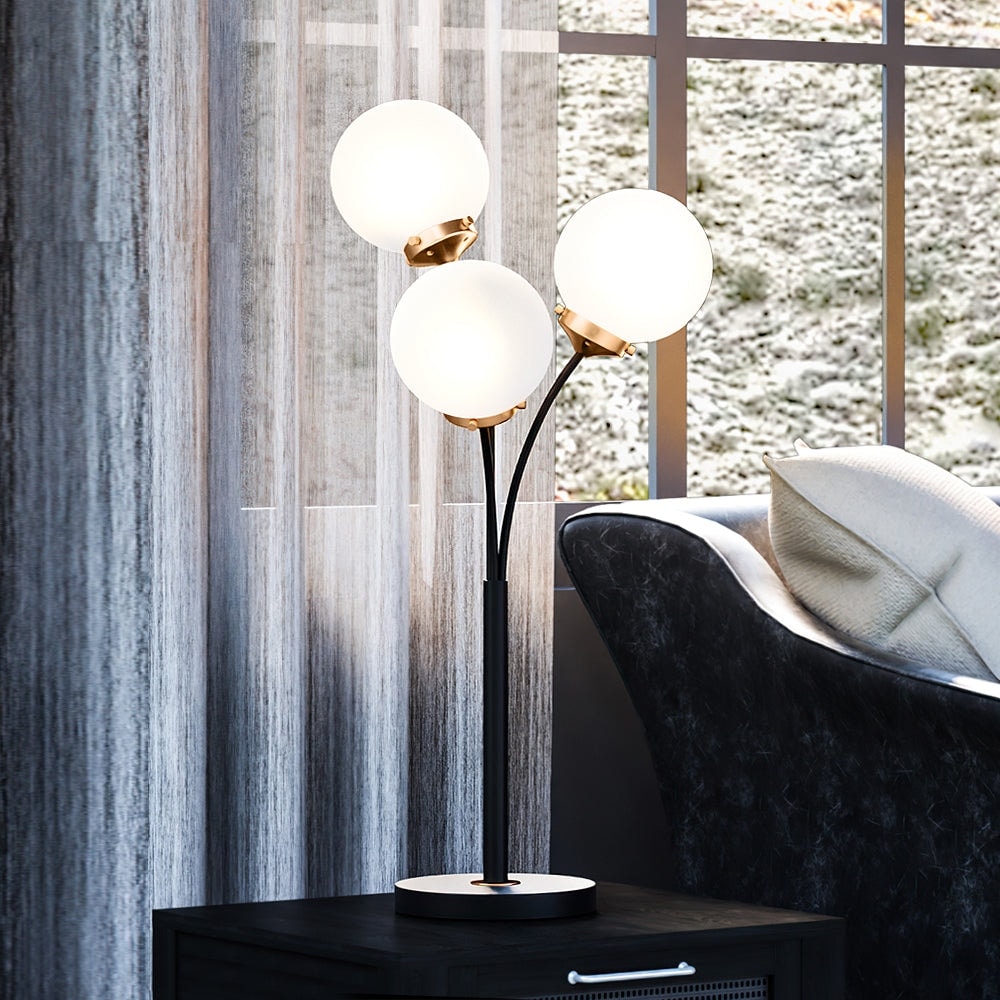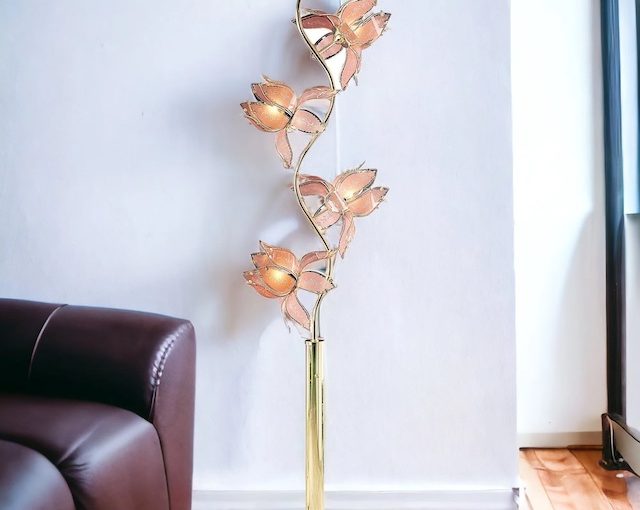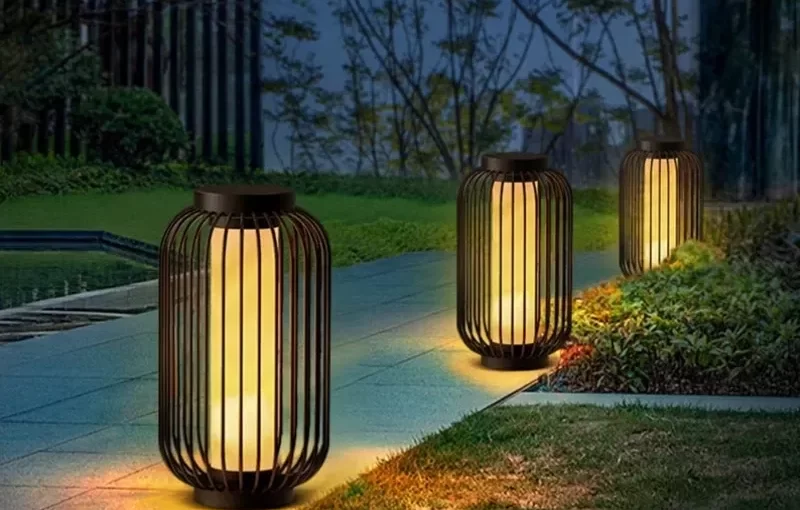The Origins of Mid Century Floor Lamp Design
The mid century floor lamp returns us to the 1940s to the 1960s. During this era, the design world saw a shift in how people thought about and used home furnishings. Function began to marry with form, giving rise to pieces that were both useful and beautiful. Designers looked to create objects that could fit the rapidly changing lifestyles post-World War II. The mid century style floor lamp is a classic example of this design philosophy.
It drew inspiration from the Industrial Revolution and the modernist movement. The designs often featured clean lines and an organic flow that came to symbolize mid-century modern design. These lamps aimed to illuminate homes in a way that was sleek, unobtrusive, and aesthetically pleasing. Design icons like George Nelson, Greta Grossman, and Verner Panton played pivotal roles. Their work helped cement this epoch’s influence on lighting design. The mid century style floor lamp is not just a lighting instrument; it’s a piece of history that reflects the era’s innovation and style.
Key Characteristics of Mid Century Style Floor Lamps
Mid century style floor lamps stand out for their unique design elements. The era is known for its emphasis on sleek, clean lines and organic curves that blend with function. This aesthetic aimed to make a design statement while maintaining simplicity and utility. Let’s explore these key characteristics in more detail.
Clean, Streamlined Silhouettes
Mid century floor lamps typically feature slender profiles and minimalistic outlines. Think of slender stems and bases paired with shades that have a geometric or free-flowing form. This design helps to enhance the room without overwhelming the space.
Organic Shapes and Forms
The lamps often incorporate organic shapes that mimic natural forms. Designers of the time found beauty in the simplicity of nature, which they translated into their lamp designs. The result is lighting fixtures that serve as functional art pieces.
Functionality Fused with Elegance
Function was equally important as form in mid century design. These lamps not only provided illumination but did so with style. They often included adjustable features like swivel heads or extendable arms for targeted lighting.
Experimental Use of Materials
Designers experimented with new materials and technologies. It was common to see lamps made from metals, woods, and plastics. These materials opened up new possibilities for texture, color, and form.
Rich But Subtle Colors
While the design stayed simple, there was a play with color. Mid century floor lamps often featured rich yet subtle hues. These colors ranged from soothing earth tones to bold, vibrant shades.
Recognizing these characteristics is key when seeking a mid century style floor lamp. They capture the essence of the era’s design philosophy, merging the functional with the beautifully artistic.
Top Mid Century Floor Lamp Designs That Have Stood the Test of Time
Some mid century style floor lamp designs have become icons of their time. They remain popular and continue to influence modern lighting. Here we look at notable designs that still capture our hearts.
The Arco Lamp
Designed by Achille Castiglioni in 1962, the Arco Lamp has a distinctive arch shape. It brings overhead lighting to any space without the need for ceiling suspension. It features a marble base which balances a long, curved stainless steel arm. A swivel lamp head directs light where needed.
The Tripod Lamp
The tripod lamp stands on three legs, offering stability and style. Designers like Greta Grossman designed lamps where form follows function. The design adds sophistication to any room. This style often combines wood with metal details, achieving a balanced look.
The Grasshopper Lamp
Another Grossman design, the Grasshopper Lamp, presents a slender, angled stance. Its minimalistic look fits well in any contemporary space. An elongated aluminum conical shade and tubular steel legs make it a standout piece.
The PH5 Pendant Lamp
Although not a floor lamp, the PH5 Pendant Lamp by Poul Henningsen deserves mention. Its tiered shade system beautifully diffuses light. First introduced in 1958, it still hangs in homes worldwide. It shares the mid century lamp family’s design ethos.
The Taccia Lamp
Created by the Castiglioni brothers in 1962, the Taccia Lamp features a large, clear glass bowl. This reflects light from a hidden source within a metal base. It’s a beautiful example of indirect lighting typical of mid century design.
The Noguchi Floor Lamps
Isamu Noguchi’s floor lamps mix traditional Japanese paper lanterns with modernist forms. These lamps showcase organic shapes and a warm, ambient glow. They are sculpture-like, with a subtle nod to the era’s biophilic design.
These are just a few examples of enduring mid century style floor lamp designs. Their timeless appeal proves that well-thought-out design never goes out of style. When considering such a lamp for your space, these classic designs offer a reliable starting point.
How to Incorporate Mid Century Floor Lamps into Modern Interiors
Incorporating a mid century style floor lamp into your modern interior is simple yet transformative. To blend this classic design seamlessly into a contemporary setting, consider these tips:
Choose the Right Location
Place the lamp in a spot where it can make a statement without cluttering the space. Common choices include living room corners or beside a reading chair. The goal is to create a focal point that draws the eye.
Mix with Contemporary Pieces
Pair your mid century lamp with modern furniture. This creates a blend of eras. For instance, put a sleek lamp next to a minimalist sofa. The contrast highlights the lamp’s timeless design.
Consider the Existing Decor
Choose a lamp that matches the room’s color scheme and style. A lamp with wood accents works well in a room with natural elements. For a bold interior, select a lamp with vibrant colors.
Use as Task Lighting
Mid century floor lamps are great for specific tasks. Place one near a workspace or reading nook for focused lighting. Their adjustable features make them ideal for functional use.
Highlight Architectural Features
Use the lamp to accentuate your home’s architectural details. Aim the light towards an art piece or wall texture. This way, the lamp serves not just as light but as a part of the decor.
Balance the Scale
Ensure your lamp’s size fits the room. A large lamp in a small room can overwhelm the space. Likewise, a small lamp may get lost in a spacious area. Scale is key.
Remember, the key to incorporating mid century floor lamps is to pay attention to balance, location, and harmony with existing decor. Enhance your modern interiors with a touch of classic elegance, using these mid century masterpieces.
The Role of Materials and Colors in Mid Century Lamp Aesthetics
The design of mid century style floor lamps is not just about shape and function. Materials and colors also play a critical role in their aesthetics. Let’s unpack how these elements were crucial in creating the iconic look of mid century lighting.
The Impact of Material Choices
Mid century designers were pioneers in experimenting with materials. Metals, like polished chrome and brass, brought a sleek, modern feel. Woods added warmth and organic appeal. Plastics allowed for new, exciting shapes and durability. These choices directly influenced the lamp’s style and longevity.
Exploring the Palette of Mid Century Lamps
Colors in mid century floor lamps ranged from neutral to bold. Designers used earthy tones to blend with any room’s decor, adding a subtle elegance. Bold colors punctuated spaces with a vibrant touch. This balance of colors underscored the era’s aesthetic flexibility.
Through smart material and color choices, mid century lamps highlighted their era’s love for innovation and style. They serve as reminders that attention to detail in these areas can significantly influence design outcomes.
Lighting Techniques with Mid Century Floor Lamps
Using a mid century style floor lamp is not just about filling a room with light. It calls for strategy. Proper lighting techniques can enhance mood, focus, and the overall ambiance of a space. Here are some practical ways to use these vintage-inspired lamps effectively:
Create Layered Lighting
Combining lights at different heights adds depth to your space. Mix a mid century lamp with ceiling or wall lights. This creates layers of light. Use them to shape distinct areas in a room.
Use Dimmers for Adjustable Ambiance
Many vintage pieces come with built-in dimmers. They adjust the brightness. This lets you change the mood from work to relaxation time with ease.
Focus on Function
Use your lamp where it aids tasks, like reading or writing. The adjustable arms and shades on many mid century lamps focus light exactly where you need it.
Accentuate Decor
Point the lamp towards a painting or plant. It accents these features and adds character to the room. This technique shows off your decor and the lamp’s design.
Play with Shadows
The unique shapes of mid century shades can cast interesting shadows. Place your lamp near a wall to create subtle patterns that bring life to the room.
By applying these lighting techniques, you turn a simple mid century style floor lamp into a functional design statement. These tips help you use the light they offer to its full potential.
Care and Maintenance Tips for Vintage Floor Lamp Treasures
Taking care of a mid century style floor lamp can keep it shining for years to come. To preserve your vintage treasure, consider these handy tips.
Regular Dusting
Gently wipe your lamp with a soft cloth regularly. This prevents dust from gathering and dulling its appearance.
Avoid Harsh Chemicals
Harsh cleaners can damage the lamp’s material. Use mild soaps and water instead for cleaning.
Handle with Care
Vintage lamps can be delicate. Always carry them by the base, not the shade or cord.
Change Bulbs as Needed
Older lamps may require specific bulbs. Always replace with the correct type to prevent damage.
Check Electrical Components
For safety, inspect cords and plugs frequently. Look for signs of wear and tear, and fix them promptly.
Protect from Direct Sunlight
Prolonged exposure to sun can fade colors. Position lamps away from direct light to keep colors vibrant.
Consult Professionals
For major repairs, seek expert help. A professional can restore your lamp without harming its value.
By following these tips, you ensure your mid century style floor lamp remains a glowing piece of history in your home.
Where to Find and Buy Mid Century Style Floor Lamps
Finding the right mid century style floor lamp can add a touch of elegance to your home. Here are places to start your search:
Vintage and Antique Shops
Local vintage shops often carry a selection of mid century lamps. It’s a good place to find original pieces with a story.
Online Marketplaces
Sites like eBay and Etsy have listings from sellers worldwide. You can find a range of options, from affordable to high-end.
Specialty Lighting Stores
Some stores focus on retro and mid century designs. Check out these shops for quality reproductions or authentic pieces.
Auctions
Auction houses can be a source for rare and designer lamps. Keep an eye on auction calendars for upcoming sales.
Estate Sales and Flea Markets
You might stumble upon a mid century floor lamp gem at estate sales or local flea markets.
Modern Furniture Retailers
Many modern retailers carry lamps inspired by mid century design. These can offer a contemporary twist on the classic look.
Social Media Groups and Forums
Join groups or forums dedicated to mid century decor. Members often post items for sale or trade.
When buying a mid century style floor lamp, check the condition and authenticity. If it’s vintage, ask about the history and any restoration work. For new replicas, read reviews and check the quality. With these tips, you’ll find the perfect lamp to illuminate your space.







































